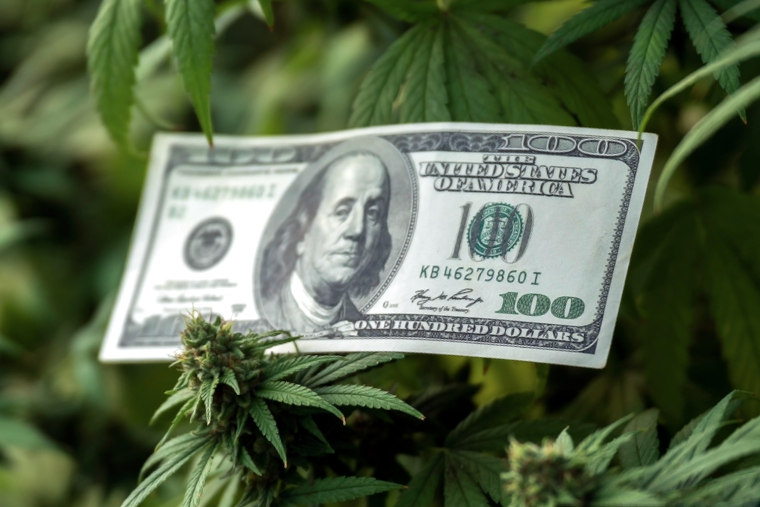The legal cannabis “green rush” of the past decade has given way to a far more challenging reality for cultivators. What started as a lucrative opportunity in newly legalized markets has increasingly been squeezed by falling prices, rising costs, and intense competition. Today, 24 U.S. states plus D.C. have legal adult-use cannabis markets, meaning nearly half the country permits commercial cultivation. With so many new growers and states in the mix, many are asking whether cannabis growing is still profitable in 2025.
This report tackles that question through a detailed look at the major legal markets—especially California, Oregon, Colorado, and Michigan—and compares indoor vs. outdoor vs. greenhouse cultivation economics. We’ll explore how market saturation, wholesale price crashes, regulatory burdens, and shifting consumer demand are impacting both large-scale commercial operations and small craft growers, and what opportunities remain (such as processing into extracts, building brands, or vertical integration) for growers to turn a profit.

Figure: Wholesale cannabis flower price index trends in four mature state markets (2015–2024). Western states like California, Colorado, Oregon, and Washington have all seen steep declines and convergence in prices as their markets matured. (Source)
The U.S. Cannabis Cultivation Landscape: Boom to Bottleneck
America’s legal cannabis cultivation landscape has expanded dramatically, but that growth has come with growing pains. In 2024, U.S. legal cannabis sales topped $31.4 billion, yet profit margins for growers have thinned in many states. Early on, limited licenses and high demand meant cultivators could fetch premium prices—often over $3,000 per pound for wholesale flower in some markets. But as production ramped up and new states came online, basic economics kicked in: supply overshot demand, and prices plummeted.
Outside a few outlier states, wholesale cannabis flower now hovers between $500 and $1,000 per pound in most markets. One industry survey in 2023 found two-thirds of U.S. cultivators were not profitable or only breaking even. Competition and price compression were cited as the #1 challenges by growers, ahead of even regulatory hurdles. In online forums, seasoned growers voice frustration—one Reddit user bluntly claimed “it is impossible to turn a profit growing weed in most legal states”, reflecting the harsh new economics growers face.
Yet, the situation is not uniform across all states. Each legal state has its own market dynamics, from the oversupply glut in western states to the still-high prices in some newer limited-license markets. Below, we examine conditions in key states—California, Oregon, Colorado, and Michigan—which together provide a cautionary tale of how quickly profitability can erode when everyone rushes to grow. We’ll also contrast these with other states to see where growers still fare better (and why). The goal is to paint a comprehensive picture: Is cannabis growing still profitable? The answer, as we’ll see, is “it depends”—on where, how, and at what scale you grow.
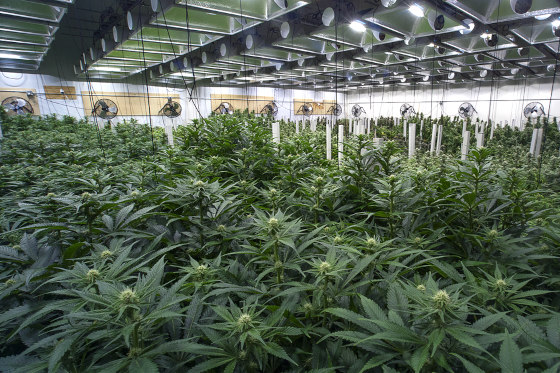
Major Market Snapshots: Profitability in Leading States
California: Golden State Growers in the Red
California is the largest cannabis market in the U.S., but being a grower in the Golden State has become a gold-plated headache. After legalization (Prop 64) opened the gates in 2018, thousands of cultivators—from small Emerald Triangle farmers to big greenhouse operations—piled into the legal market. However, by 2021 the market hit serious turbulence. Wholesale licensed cannabis prices in California peaked in late 2020 and then went into freefall, dropping 57% by 2024 when adjusted for inflation. The decline was especially brutal for sun-grown flower: outdoor-grown wholesale prices fell ~74% from their peak, versus a ~46% drop for indoor-grown product (mixed-light greenhouse fell ~60%). Inflation-adjusted retail prices have likewise slid downward each year since 2020.
Why the crash? Oversupply and heavy taxes/fees are the chief culprits. California’s licensed growers produced an estimated 1.43 million pounds of legal cannabis in 2024, more than ever, even as a thriving illicit market still supplies around 60% of total consumption. This means legal growers are effectively competing with unlicensed producers (who don’t pay taxes or compliance costs) and with each other, all chasing the same consumers. Until mid-2022 California even imposed a hefty per-ounce cultivation tax (since repealed), on top of high local taxes and state excise taxes—all of which squeezed growers’ margins to nil.
According to state data, indoor-grown flower still commands a price premium (historically about 2.2 times higher than outdoor flower on average), due to higher quality and potency, but by late 2024 even that premium spiked to an unprecedented 4.7:1 ratio (indoor vs. outdoor) as outdoor prices hit rock bottom. In other words, top-shelf indoor buds might wholesale for $1,200+ a pound while outdoor bulk flower can go for only a few hundred dollars.
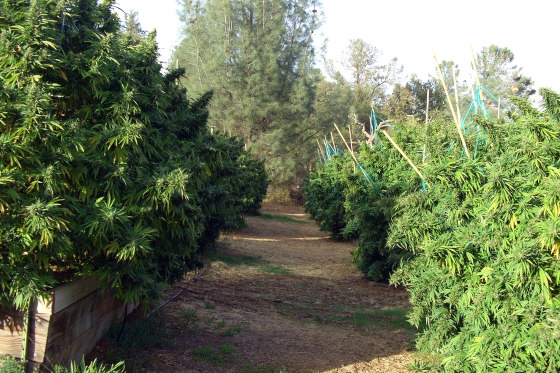
The result: a wipeout of small farms and a pullback in canopy. California’s legal cultivation sector shrunk dramatically in the past two years. The state lost roughly 1,766 (about 23%) of its cultivation licenses between early 2022 and early 2023 as many small operators surrendered their permits. That represents over 19 million square feet of growing area gone in one year. “Low wholesale prices and high taxes have made it almost impossible for operators to run a profitable small business,” insiders say. Even in legendary growing regions like Humboldt and Mendocino, legacy craft farmers are struggling to survive the legal market’s costs. Some have pivoted to niche “craft cannabis” branding or sought direct-to-consumer avenues, but many others have closed up shop or returned to the illicit trade. Larger companies have also felt the pain—for instance, CannaCraft and other big California cultivators downsized operations in 2022–23 amid the price freefall.
The only silver lining is that with hundreds of farms quitting, the oversupply may ease. Indeed, California’s total licensed canopy fell by about 23% in that period, a self-correction that could stabilize prices. But for now, California’s cannabis growing scene is a survival-of-the-fittest where only the most efficient (or deep-pocketed) can tread water. Profitability is elusive unless growers find a way to drastically cut costs or differentiate their product in this saturated, highly taxed market.
Oregon: A Cautionary Tale of Oversupply
If California’s situation is tough, Oregon’s is arguably worse in terms of oversupply. Oregon embraced a free-market approach early on—issuing cultivation licenses freely—and the result was a flood of cannabis. By 2019, tales of “Oregon’s weed glut” were already making headlines, and the trend has only continued.
In 2024, Oregon’s licensed growers harvested an astonishing 12.3 million pounds of cannabis (wet weight)—far more than the state’s consumers could ever smoke or ingest. Demand has essentially plateaued around under $1 billion in annual sales, so production is roughly double what’s being sold. The outcome was predictable: prices collapsed to historic lows. The Oregon Liquor and Cannabis Commission (OLCC) reports that by late 2024 the median retail price for a gram of flower fell to just $3.75—an all-time low. That’s equivalent to about $105 per ounce at retail, a price point more reminiscent of the illicit market than a heavily regulated one.
For growers, wholesale prices became devastatingly low. In mid-2023, wholesale usable flower in Oregon averaged around $599 per pound (for mid-grade wholesale)—and that was before the record 2024 harvest drove prices even lower. Many growers were seeing offers of well under $500/lb for decent outdoor-grown bud, which is below the cost of production for most. Even indoor flower in Oregon has been selling cheaply relative to historical norms, because there’s simply too much product statewide. Oregon regulators tried to slow the flood by placing a moratorium on new grow licenses in 2019 (extended through 2025), but the damage was done—existing farms kept expanding up to their limits. As cannabis consultant Beau Whitney quipped, Oregon’s market produced “an unprecedented surplus” and failed to limit supply, leading him to argue the state “should impose limits on the supply” to prevent total market collapse.
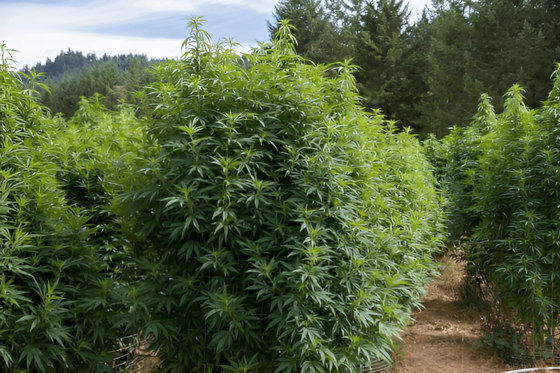
The economic carnage is real: many independent growers are operating at a loss or have resorted to drastic measures. Some are exiting the industry and selling off licenses, while others have quietly turned to the illicit out-of-state market to unload excess pounds (despite interstate sales still being illegal). There are reports of Oregon flower being covertly shipped to states where wholesale prices are higher. This dynamic is not unlike the 1980s farm crises—too much crop, not enough buyers. And unlike corn or wheat, Oregon can’t export its surplus cannabis to other states (at least not legally yet). Growers are essentially trapped in a “closed loop” market, meaning no escape valve for the surplus.
Hopes are pinned on eventual federal legalization enabling interstate commerce; if that happens, Oregon’s famously high-quality, low-cost outdoor bud could find new markets across the country. But unless and until that day comes, profitability for Oregon cultivators is extremely challenging. Only those who can produce at rock-bottom cost (or who have differentiated craft products) can survive the price war. The shakeout is ongoing—Oregon’s cannabis industry is “in crisis,” with independent farmers and even processors and retailers “struggling to stay afloat as demand remains stagnant”. In short, Oregon exemplifies the profitability problem: when everyone grows as much as they can, nobody makes money.
Colorado: Maturing Market Meets Price Compression
Colorado, as one of the first states to legalize adult-use (in 2012), offers a look at a fully mature cannabis market. For several years, Colorado growers enjoyed relatively healthy prices because demand was strong and the industry grew gradually. However, by the late 2010s and early 2020s, competition and efficiency gains drove prices way down.
The Colorado Department of Revenue’s data shows that the state’s Average Market Rate (AMR) for wholesale flower hit record lows in 2023, with a median price of about $649 per pound in Q2 2023—the lowest since adult-use sales began in 2014. That price was over 63% lower than wholesale in 2021, a staggering drop in just two years. In fact, for four consecutive quarters in 2022–2023, Colorado’s AMR for flower kept hitting new all-time lows. By October 2023, wholesale bud was around $658/lb, barely above the absolute floor set earlier in the year.
This price plunge coincided with a decline in retail sales and a saturated market. After the pandemic boom of 2020, Colorado’s cannabis sales slipped ~20% in 2022 from their 2021 peak. 2023 started slow as well, indicating the market might have plateaued or even shrunk slightly. With demand leveling off and supply plentiful (Colorado has no state cap on licenses, and many large-scale grows are operating), wholesale prices have settled in a low range. As of mid-2024, spot indexes put Colorado flower around $800 per pound, far below the $1,500+lb seen in the mid-2010s. Growers’ profitability has been squeezed hard—a Colorado hard-money lender’s analysis noted an influx of calls from growers looking to sell facilities or exit the business, as the “next Gold Rush” hype faded into a tough, low-margin reality.
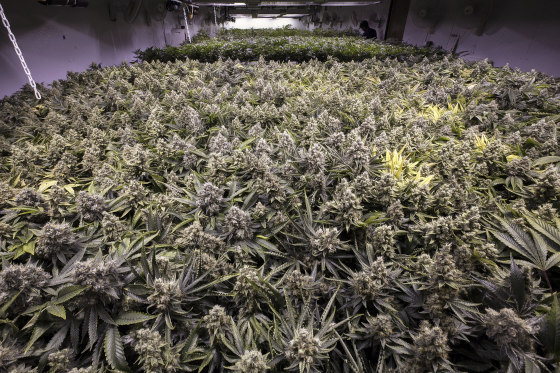
That said, Colorado’s market is somewhat more stable than Oregon’s or California’s. The state did experience a culling of weaker operators earlier, and some consolidation. Many Colorado cultivators also vertically integrated (since early on, Colorado required growers to be tied to retail operations—a rule that has since relaxed), which gave them a guaranteed outlet and some insulation from wholesale volatility. Even so, the current environment in Colorado is one of slim profits. Efficient greenhouse operations on the Eastern Plains and high-tech indoor grows in Denver compete to supply a finite number of dispensaries.
New entrants find it hard to compete on cost with established players who have optimized their grows. On the craft side, Colorado has a niche “connoisseur” market for small-batch, boutique strains, but even craft growers report fierce competition and pressure to lower prices. In summary, Colorado’s cultivation sector is profitable only for the leanest and most adaptive. As one cultivator survey found, by late 2022 less than 25% of cannabis businesses in the U.S. (generally) reported being profitable, and Colorado is no exception to that trend. The state’s experience underscores how initial high margins inevitably erode as a legal market matures.
Michigan: From Green Boom to Shakeout
Michigan has been a fascinating case—a newer market that saw explosive growth and then quickly encountered oversupply issues. Adult-use cannabis sales began in Michigan in late 2019, and by 2021–2022 the state was breaking records. In 2023, Michigan retailers sold over $3.2 billion in cannabis—at times even outselling California (which has a population four times larger). This rapid growth was fueled by fairly loose licensing (especially compared to heavily limited markets like Illinois) and a transition of many medical “caregiver” growers into the licensed market.
For a period, growers were flocking to Michigan, enticed by early wholesale prices reportedly as high as $4,000 per pound in the medical days. But as Michigan’s licensed cultivation capacity surged, the market swiftly became saturated. By late 2022 and into 2023, the state’s once-sky-high prices went into freefall.
Michigan’s cannabis prices have collapsed—great for consumers, brutal for growers. In 2020, an ounce of flower in Michigan retailed for over $400; by 2023 it had dropped under $90 on average, and still kept falling. December 2024 hit an all-time low of around $69 per ounce retail on average. Wholesale followed suit: the average wholesale price for adult-use flower in Michigan by March 2025 was about $1,042 per pound, 28% cheaper than just a year earlier—a new record low for the state.
This collapse in price was driven by massive oversupply. In the span of 2020–2022, Michigan issued hundreds of new cultivation licenses and many ambitious companies built out large grows. By the end of 2024, Michigan’s licensed producers had a staggering 2.8 million pounds of excess cannabis sitting in storage (mostly as “fresh frozen” awaiting processing)—a 228% increase in inventory over the prior year.
Even as sales hit record levels in 2024, the inventory barely shrank; by early 2025, about 1.5 million pounds remained warehoused, 316% more than a year earlier. This is effectively a mountain of surplus flower that has not found a market. Some of it is being stored frozen to later make into concentrates or edibles, but there’s so much that processors “can’t use it fast enough”.
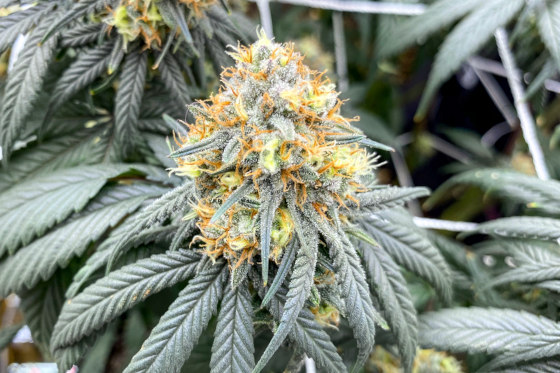
Prices in Michigan reacted accordingly—too much supply chasing customers. Reports emerged of bulk frozen cannabis selling for as little as $0.12–$0.15 per gram (basically $50–$70 a pound!) for extraction purposes. As one industry consultant noted, “it’s unbelievable—literal tons of Michigan weed just sitting in freezers”. Consumers, on the other hand, are thrilled: dispensaries are offering $100 ounces and $10 vape cartridges, bargains that would have been unthinkable a few years ago. One Michigan mom joked, “we used to budget for Dad’s medicine like a car payment; now it’s like buying an extra pizza”, highlighting how affordable cannabis has become for the public.
But for businesses, the crash is dire. Many Michigan growers and even retailers expanded rapidly during the boom—leasing additional facilities, hiring staff—only to see revenue per unit plummet. Profit margins evaporated. By late 2024, industry observers noted “profitability… has become elusive, even as sales volumes hit records”, leading to a wave of closures and consolidations. Indeed, Michigan in 2023–2024 saw some prominent operators shut down facilities.
For example, Pincanna, a large Michigan-based cultivator/retailer, temporarily closed its huge Bay County greenhouse and laid off staff, with a co-founder citing the “unsustainable” oversupply and falling prices that made profitability impossible. Other companies downsized or went bankrupt in this shakeout. Essentially, Michigan’s trajectory shows how a “green boom” can flip to a bust in just a couple of years. Is growing still profitable in Michigan? At this moment, only for a few. The survivors tend to be those who either have the lowest production costs, a strong brand that can command a premium, or a vertically integrated model to capture retail margins. Michigan’s market is now maturing out of its exuberant phase; as one local expert put it, “flat is the new up” for sales growth, and everyone is chasing efficiency to stay afloat.
Other States: Highs, Lows, and Emerging Trends
Beyond those four states, the profitability of cannabis cultivation varies based on each state’s regulatory structure and market stage. States with tightly limited licenses or newer markets often still see high wholesale prices, which can be lucrative for early growers. For instance, in 2023, wholesale flower in states like Massachusetts, Missouri, and Alaska remained well above $2,000 per pound on average, far higher than in saturated western markets.
Missouri’s new adult-use market (launched 2023) saw a frenzy of demand and limited supply, pushing prices up—a boon for those cultivators who got an early license. Ohio, which only recently legalized adult use (and had a limited medical program), likewise had wholesale prices over $2,200/lb in 2023. In these states, growers can still enjoy fat margins for now. However, history suggests this is often temporary; as markets expand (more licenses or illicit supply entering) those high prices tend to fall. Illinois is a good example—early on, very few cultivators were licensed, and prices stayed sky-high, but as that state slowly issues more licenses and production catches up, prices are softening.
On the other end, some medical-only states with light regulation became flooded, similar to Oregon. Oklahoma, for example, handed out an incredible number of grow licenses (over 9,000 at one point) for its medical program, resulting in huge overproduction. A report in 2022 found Oklahoma growers were producing 64 times more cannabis than needed to meet in-state patient demand! Wholesale prices there plunged accordingly, and much of the surplus was trafficked illegally to other states. This pushed Oklahoma to enact a license moratorium as well.
Washington State, another early market, had its price crash a few years back (similar to Colorado) and has since stabilized at low levels. Nevada and Arizona have seen moderate oversupply; their desert climates favor indoor/greenhouse grows which can be costly, but both states have robust tourism sales that keep demand high.
East Coast markets like New York and New Jersey have had a bumpy start—New York’s rollout in particular led to a situation where dozens of small licensed farms harvested crops but had very few legal retailers to sell through in 2022–2023. This left many NY growers in the lurch; by one account 97% of New York’s licensed craft farmers were operating at a loss in 2023, with nearly two-thirds of them under a razor-thin 1% profit margin. Their product was sitting in warehouses as legal stores trickled open, while illicit NYC “gray market” shops undercut prices. This shows that even in a limited-license environment, regulatory delays or illicit competition can kill profitability.
In summary, across all legal states the trend is that cultivation margins tighten over time. Some states still afford a profit window for growers (especially early in a program or where licenses are scarce), but no market stays a goldmine forever. Cannabis is fundamentally an agricultural commodity with a twist: it’s easy to produce, but hard to sell profitably once everyone is doing it and rules make it expensive to comply. Next, we’ll look at how how cannabis is grown—indoor vs. outdoor vs. greenhouse—affects those costs, yields, and ultimately, the bottom line.
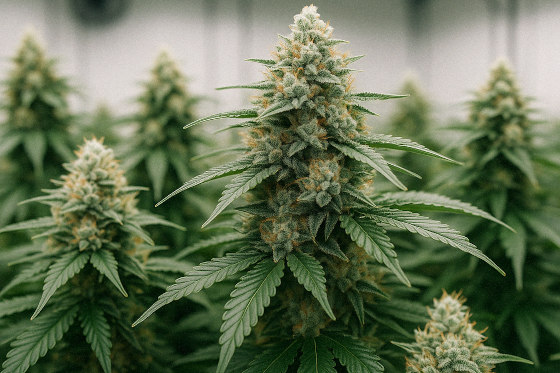
Indoor vs. Outdoor vs. Greenhouse: Comparing Cultivation Methods
One key factor in profitability is how you grow your cannabis. The industry spans everything from high-tech indoor grows in converted warehouses, to sun-soaked outdoor fields, to hybrid greenhouse operations. Each method has very different cost structures and yields, which influence profit potential. Below is a comparison of the three major cultivation methods on startup costs, operating expenses, typical yields, and the pricing of the product:
Indoor Cultivation
- Startup Cost (per sq. ft.): High—Extensive building infrastructure needed (lighting, HVAC, etc.). Often $75+ per sq ft to set up (median ~$75), and in some cases total costs run $300–$600/sq ft for fully equipped facilities.
- Operational Costs: Highest—Heavy ongoing costs for electricity (lighting 12–18 hours/day, cooling, ventilation), as well as labor for continuous harvest cycles. Indoor growers often face $400+ per pound in production cost. Few indoor farms can get below $200/lb cost (only ~13% reported sub-$200 costs), and many are considerably higher.
- Yields & Harvest Frequency: Year-Round, Multiple Harvests—Indoor allows 4–6 harvests per year since environment is controlled. Yields per square foot per harvest can be high (e.g. 30–60 grams/sq ft), so annual yield per sq ft is highest. However, intensive cycles mean more work and skill required.
- Product Quality & Pricing: Top-Shelf Quality, Premium Price—Indoor tends to produce the most visually appealing, potent buds (high THC%, perfect trim) sought after as “exotic” or top-shelf flower. As a result, indoor-grown cannabis commands the highest wholesale and retail prices, often significantly higher than greenhouse or outdoor. (Historically ~2 times the price of outdoor of the same strain.) This premium can help offset the higher costs—if there is enough market for high-end product.
Greenhouse Cultivation
- Startup Cost (per sq. ft.): Moderate—Requires greenhouse structure, but uses sun for light. Roughly $50 per sq ft on median startup (about 50% cheaper than indoor). High-end high-tech greenhouses can cost $75–$100/sq ft, but simpler hoop-houses are cheaper.
- Operational Costs: Medium—Costs for supplemental lighting, light deprivation, and some climate control, but much energy is saved by using sunlight. Many greenhouse operations can achieve $200–$300 per pound production cost. In surveys, ~30% of greenhouse growers got costs. Labor is still significant but often less than indoor (fewer crop cycles).
- Yields & Harvest Frequency: Extended Season, Multiple Harvests—Greenhouses can often do 2–4 harvests a year, especially with light-dep techniques simulating seasons. Yields per sq ft are good (not quite indoor levels but better than pure outdoor). Quality can approach indoor if managed well.
- Product Quality & Pricing: Mid-High Quality, Mid-Range Price—Greenhouse bud can be high quality, especially in sophisticated operations, but minor differences (slightly less dense buds, etc.) mean it usually sells for a middle price tier between indoor and outdoor. Many dispensaries categorize “greenhouse” or “light dep” flower as mid-shelf. Consumers may not always distinguish it from indoor, but generally it’s priced a bit lower. This method offers a balance: lower costs than indoor, but product that sells for more than outdoor—hence many see it as the most cost-effective method in legal markets.
Outdoor Cultivation
- Startup Cost (per sq. ft.): Low—Minimal structure (perhaps fencing, irrigation). Around $10 per sq ft median startup cost. Essentially just land prep and basic equipment; many outdoor farms start small and scale up gradually.
- Operational Costs: Lowest—Sunlight is free, and many outdoor farms have one harvest per year, keeping labor and energy costs low. Outdoor growers can have very low cost per pound, sometimes under $100 in ideal conditions. (Over half of outdoor growers surveyed achieved <$200/lb production cost.) Expenses include irrigation, nutrients, pest management, and harvest processing, but far less environmental control expense.
- Yields & Harvest Frequency: Seasonal, Usually 1 Harvest—Outdoor farms typically plant in spring and harvest in fall (one big annual harvest). Yields per plant can be huge (outdoor plants can grow very large, producing 1–2+ pounds per plant), but because plants are spaced out, yield per square foot of canopy is lower overall. There’s usually a single annual income event, which can lead to oversupply at harvest time and storage of product for year-round sales.
- Product Quality & Pricing: Variable Quality, Lowest Price—Outdoor-grown cannabis often has lower bag appeal: factors like weather, pests, and dust can affect buds, and they may be less potent or pretty. While sun-grown organic flower has a niche following, generally outdoor product sells at the lowest price per pound. Much outdoor bud ends up in extracts or pre-rolls rather than top-shelf flower jars. Outdoor growers face the harsh reality that, in glutted markets, their product might fetch only a few hundred dollars per pound. During oversupply peaks, outdoor flower prices have dropped to unbelievably low levels (e.g. California outdoor pounds in 2023 sometimes <$200!). The trade-off is the much lower cost to produce.
Key Takeaways
Indoor grows give ultimate control and the ability to produce premium bud year-round—but they are expensive to build and run, so profitability requires a high price per pound that many markets no longer sustain.
Outdoor grows are far cheaper and more environmentally friendly (sun-grown), but you’re at the mercy of Mother Nature and market gluts, and the product usually sells for less (great for extracts though).
Greenhouses sit in the middle and have increasingly become the choice for large-scale producers who want to minimize costs without sacrificing too much quality. In fact, the trend in established markets has been a shift toward greenhouse cultivation for economic reasons. As one report noted, many new projects are “investing in sprawling greenhouse facilities” and using tech like light deprivation to achieve near-indoor quality. Some experts even question if traditional indoor will remain viable long-term as greenhouses improve (perhaps “indoor might become obsolete” if sun-powered grows reach the same quality).
For now, each method can be profitable under the right conditions, but indoor growers in particular have felt the squeeze of rising energy costs and falling prices—their model is high-risk, high-reward, whereas outdoor growers play the low-cost volume game (with higher risk of oversupply).
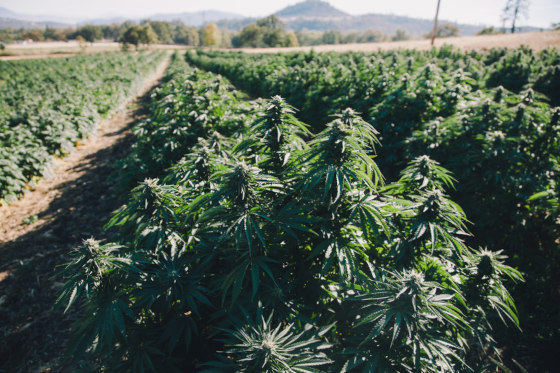
Scale Matters: Commercial vs. Craft Growers
Another factor in profitability is scale—the fortunes of large commercial cultivation operations versus small “craft” growers can be quite different, yet both are under pressure in today’s market.
Large-Scale Commercial Growers
These include multi-acre outdoor farms in states like California, 100,000+ sq. ft. high-tech greenhouses, and massive indoor facilities run by Multi-State Operators (MSOs) or well-capitalized companies. The advantage of scale is the ability to drive down the cost per pound (economies of scale) and supply large volumes to market. Big growers can afford automation, advanced technology, and can negotiate bulk discounts on inputs.
When the market was young, many large operations enjoyed fat profits—essentially printing money with big harvests sold at premium prices. But now, even large growers are feeling the margin squeeze. They have high overhead and investors to answer to, and when prices fall, the impact is huge because they move so much product. We’ve seen some big companies close facilities or halt expansions because the economics stopped making sense. For example, in Michigan’s shakeout, even large operators like PharmaCann (which had acquired LivWell) scaled back cultivation in 2024 due to oversupply.
In California, some of the biggest greenhouse farms in Salinas and Santa Barbara counties have reportedly cut production or left plants in the ground after wholesale prices dipped below $300/lb for outdoor—it just wasn’t worth harvesting at those prices. Large growers can survive downturns longer (they often have cash reserves or other integrated operations), but they are not immune to market forces. If their cost of production isn’t ultra-low, they can end up operating at a loss on each pound—and losing money on volume is not a sustainable strategy.
Small-Scale Craft Growers
At the other end are the thousands of small farms and boutique indoor cultivators—often legacy growers or artisanal producers focusing on quality over quantity. These craft growers typically have higher costs per pound (no economies of scale) and rely on selling premium or unique product at a higher price to make a profit. They might grow exotic strains, use organic methods, hand-trim, and otherwise differentiate their flower.
There is a dedicated segment of consumers who seek out “craft cannabis” similar to craft beer—willing to pay top dollar for boutique buds. However, the harsh truth is that many craft growers are being squeezed out in the legal market. Increasing costs and decreasing prices have pushed many to a breaking point (as one economics piece noted, many craft farmers are on the brink). In California’s Emerald Triangle (Humboldt/Mendocino/Trinity), for instance, small legacy farmers faced regulatory compliance costs that often ran tens of thousands of dollars a year, which is hard to sustain when the price for their product has collapsed. Some craft farmers who used to get $2,000+ per pound for outdoor “headstash” now struggle to get $500 in the wholesale market—unless they can establish a brand and sell direct to consumers at retail prices.
Licensing rules also affect craft growers. In some states, small growers have been given special license types (like New York’s conditional cultivator licenses, or California’s cottage licenses), but even then, they must compete with larger entities that can produce more efficiently. A poignant example: New York’s small farmers, who were supposed to have a head start, ended up stuck with product and 97% of them operating at a loss by late 2023 due to the slow rollout of retail stores and continued dominance of illicit sales. Many of these farmers invested life savings expecting a profitable new market, only to see the “promise fall flat”.
Consolidation is an ongoing trend—many smaller companies are either closing or being acquired by larger ones. By some counts, the total number of active cultivation licenses has begun to drop in mature markets (as seen in California and Oregon). Those who remain often band together in co-ops or collectives to share distribution and branding, trying to survive via strength in numbers.
In short, neither big nor small growers have an easy ride in 2025. Big growers face commodity economics (survive by scale and efficiency, but huge investments at risk), while small growers face niche economics (survive by differentiation, but limited market share and constant regulatory burdens). Notably, many CEOs in the industry are banking on “the demise of their competitors” to help lift prices—a rather cutthroat reality. This shakeout phase might eventually lead to a more equilibrium market with fewer producers who can make a decent profit. But it means heartbreak for those who fall by the wayside.
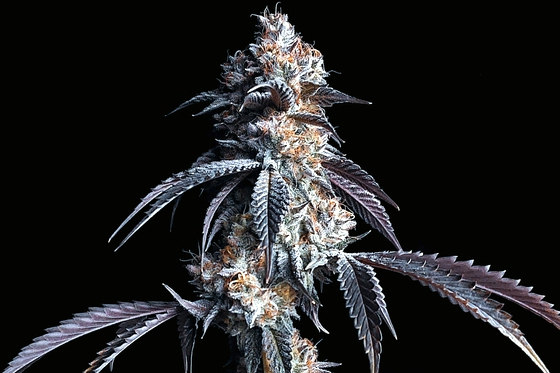
Challenges and Trends Impacting Profitability
Several macro-factors are influencing cannabis cultivation profitability across the board:
Market Saturation & Oversupply
As detailed earlier, many states overshot on production. Agriculture is prone to boom-bust cycles, and cannabis is no different, especially without interstate commerce to balance regional surpluses. When supply far exceeds demand, prices nose-dive and even efficient operations struggle. Oversupply also leads to product quality issues (old stock, degraded THC over time) which can further depress prices. States like Oregon, Michigan, and California illustrate how quickly a market can go from shortage to glut. Cultivators are literally competing against their past harvests sitting in inventory.
Falling Wholesale Prices
The drop in wholesale prices is a nationwide trend in maturing markets. A Wells Fargo cultivator survey noted 87% of growers were selling wholesale flower for $1,250/lb or less in 2023, whereas a couple years prior many could get double that. With wholesale pounds in major markets often around $700–$900 now, profit per pound is minimal once production costs (which might be $300–$500+) are accounted for. Growers who built business models on $2,000/lb are facing a rude awakening.
Retail prices have also come down, which benefits consumers but means retailers push back on what they’ll pay growers. In Colorado, for example, the median retail price for an ounce fell to ~$90 by early 2023, putting pressure all the way up the chain. In Oregon, the median retail gram at $3.75 implies extremely cheap wholesale transfer prices. This industry-wide price compression is perhaps the single biggest factor eroding grower profits.
Licensing, Regulatory, and Tax Burdens
Legal cannabis is a heavily regulated, taxed industry, and this disproportionately affects cultivators in many cases. For one, licensing fees and compliance costs add up—security systems, seed-to-sale tracking software, testing every batch for labs, fulfilling packaging and waste disposal rules, etc., all increase the cost to produce a pound. In California, cultivators long complained about a cultivation tax (which was finally removed in 2022) that charged a flat rate per dry weight—effectively a 33% tax per ounce at one point—regardless of market price.
When prices dropped, that tax stayed the same, crushing margins. Additionally, cannabis businesses cannot deduct normal expenses on federal taxes due to IRS Code 280E (since cannabis remains federally illegal). This means an effective tax rate that can be 70% or higher on profits, further dampening actual take-home profit. In surveys, growers cite “compliance with local/state regulations” and “taxes/finance management” as major challenges just behind competition.
Each state has its own rules too: for example, some states require costly METRC tracking tags on every plant, or set strict (expensive) lab testing thresholds that can force a grower to destroy or remediate a crop that fails for a minor contaminate. All these burdens make growing legally far more costly than doing so illicitly, which is why the illicit market can still undercut prices (thus pulling some customers away and worsening the legal glut). Put simply, high regulatory overhead eats into profit at every turn.
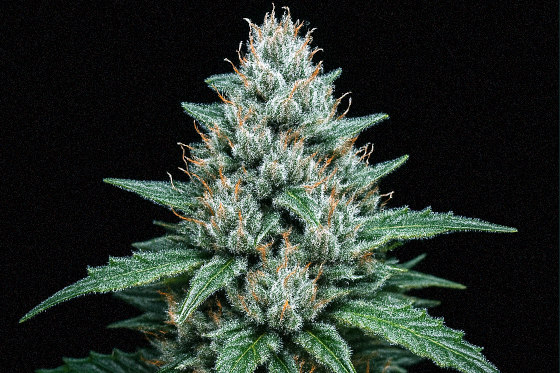
Changing Consumer Demand
Cannabis demand overall continues to grow gradually in the U.S., but how consumers use cannabis is shifting. There’s been a trend toward value products and alternatives to flower. Many consumers now prefer concentrates, vape pens, or edibles, which means the flower market isn’t growing as fast as total sales.
In some states, flower’s share of total sales has declined as edibles and extracts gain ground. This can hurt growers who focus on bud for smoking; if more of their crop has to be sold for extraction, it usually sells at lower “biomass” prices instead of top dollar. Additionally, consumers have gotten used to lower prices and abundant supply—they bargain shop. As one Michigan budtender observed, “everyone’s chasing deals now”, with customers buying smaller amounts or waiting for discounts. This puts further pressure on growers to cut their asking prices to move product. Brand loyalty in cannabis is still low (for commodity flower at least), so being a craft grower with a great strain doesn’t guarantee sales if the shop down the street sells something similar for 30% less.
Illicit Market Competition
In states like California and New York, the illegal (or “traditional”) market remains strong. Many consumers either find it cheaper or easier to obtain cannabis through unlicensed channels, which often exists because legal product is too expensive or inaccessible. Illicit growers have far lower costs (no testing, no taxes, no compliance) and thus can offer lower prices while still making money—something licensed growers watch with frustration. California’s data suggests about 60% of cannabis consumed in the state still comes from illicit sources. This not only takes away potential customers from licensed farms, but in some cases illicit product even finds its way into legal states (via diversion) and depresses prices there.
Oregon and Oklahoma famously had issues with legally grown product being sold out of state on the black market. All told, illegal competition acts as a cap on how high legal prices can go, further crimping legal grower profits. It’s an irony that some licensed growers quietly advocate for stricter enforcement against illegal grows and unlicensed dispensaries—they want a level playing field, because right now the playing field often favors the outlaws who don’t bear the same costs.
Regulatory Changes and Uncertainty
The legal landscape keeps evolving. Some changes benefit growers (e.g. tax relief, higher potency limits, allowing direct sales at farm events in California, etc.), while others can hurt (e.g. tougher testing standards, new labeling requirements). The big looming change would be federal legalization or interstate commerce. If interstate trade becomes allowed (even via piecemeal agreements or eventual federal reform), it could radically alter profitability: high-cost producers in some states might be wiped out by lower-cost producers shipping in from elsewhere.
Conversely, states like Oregon and California that chronically overproduce could find new markets to absorb their surplus—a lifesaver for their growers. The timing of this is unknown, creating uncertainty in long-term planning for cultivators. Additionally, states like New Jersey, Illinois, and others are slowly increasing the number of cultivation licenses, which will incrementally raise supply and likely ease prices down. Every new license awarded is essentially new competition for existing growers. On the flip side, states like Arizona and Nevada have kept tighter control on licenses and thus see more stable (higher) prices—but even they have to watch out for illicit inflow or patient home-grows that can dent demand.
All these factors combined make cannabis cultivation a more complex and risky business than it might appear. It’s not as simple as “people want weed, so growers make bank.” The industry’s economics are in flux, and growers must navigate not just agriculture challenges but also regulatory and market forces far beyond their farm gates.
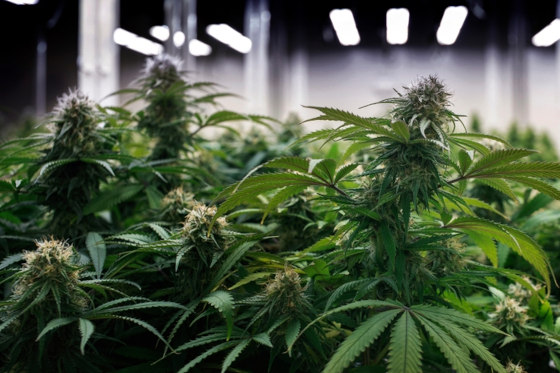
Post-Harvest Opportunities: Adding Value Beyond Raw Flower
In an environment where selling raw flower has become a low-margin (or even no-margin) endeavor in many states, cultivators are seeking post-harvest avenues to boost profitability. Turning flower into value-added products or leveraging business partnerships can help capture more revenue from each pound grown. Here are some key opportunities and strategies:
Processing into Extracts and Concentrates
Rather than selling cannabis as bulk flower, many growers are investing in processing capabilities to create oils, wax, vape cartridges, edibles, and other extracts. This can significantly increase the value derived from the raw material. For example, a pound of outdoor flower that might only fetch $300 wholesale could be processed into distillate and formulated into hundreds of vape cartridges or dozens of jars of concentrate, which at retail have much higher combined value.
By processing in-house (or partnering with a processor), cultivators move up the value chain. Especially for lower-grade flower or trim, making concentrates is a logical step—it effectively monetizes what might be unsellable as smokable bud. In places like California and Colorado, many large growers have integrated extraction labs. The caveat: the market for extracts can also get oversupplied, as seen with falling wholesale prices for oils in some regions, but generally the margins for refined products are better.
Additionally, producing extracts can extend the shelf-life of the crop (since oil doesn’t degrade as fast as flower) and allow products to be shipped to more retailers (vape pens often move faster than flower). Some cultivators focus on niche extracts like live rosin (solventless, high-terpene extracts) which command premium prices and leverage the quality of craft-grown cannabis in a different form.
Branding and Packaging (Building a Brand)
Instead of selling anonymized bulk flower to wholesalers, cultivators can develop their own brands and package their flower (or pre-rolls, or concentrates) for retail. Branding can be a game-changer—a strong brand creates consumer loyalty and allows for higher pricing. Think of how “Cookies” became a household name strain/brand commanding top dollar. Many small growers have survived by becoming known for a particular strain or quality (e.g. a farm known for organic sun-grown, or an indoor brand that consistently tests very high THC with exotic genetics).
By branding and selling B2C (business-to-consumer) through dispensaries (or even direct at farm events where allowed), a cultivator captures the retail markup instead of selling at commodity wholesale. However, building a brand requires marketing savvy, attractive packaging, compliance (all those child-proof, labeled jars add cost), and often a sales team to get into dispensaries. In saturated markets, shelf space at dispensaries is competitive—oftentimes, larger companies pay for display or have their own retail outlets. So brand-building is not easy, but those who succeed can definitely still profit. A branded eighth of top-shelf indoor can still retail for $50–$60 in many markets, whereas the same eighth sold as generic bulk might net the grower only $10–$15. That difference is the branding premium.
Vertical Integration (B2C via Owning Retail)
Some cultivators choose to “control their destiny” by owning or partnering in downstream businesses, namely manufacturing and retail. Vertical integration can help ensure that a cultivator has an outlet for their product (no reliance on wholesalers who might lowball on price) and can capture more margin by also acting as the retailer. As MJBizDaily noted, vertically integrated businesses can leverage economies of scale and see higher profit margins throughout the supply chain. Many MSOs operate on this model—they grow, process, and sell in their own dispensaries, effectively earning the cultivation profit and the retail markup.
Even smaller operators sometimes form co-ops to open a dispensary that sells their members’ flower. Vertical integration isn’t always feasible (some states ban it or small folks can’t afford a store), but when allowed, it’s a proven way to improve profitability. You’re essentially cutting out the middlemen. For instance, in Illinois, cultivators sought retail licenses because the state limited stores and having one guaranteed shelf space for their product.
In Michigan, many cultivators scrambled to open their own provisioning centers when wholesale prices started dropping. Owning retail also provides direct feedback from consumers and the flexibility to introduce new products quickly. The downside is the complexity—running a dispensary is a whole business on its own—but many see it as necessary to survive. In a survey, 94% of cannabis CEOs said they aimed to improve margins by focusing on core business performance and, tellingly, 55% were counting on competitor failures to help—implying many view vertical integration and outlasting others as the path to profitability.
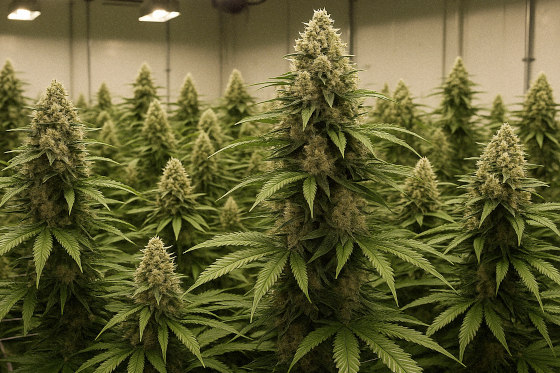
White-Labeling and B2B Partnerships
Not every grower wants to create a consumer brand or retail shop—another approach is partnering with those who do. White-labeling is when a cultivator produces flower or oil that is packaged and sold under another company’s brand. For example, a craft grower might strike a deal with a popular brand (say a celebrity-owned line) to supply them exclusive strains which the brand then sells at a premium. The grower might get a better price than generic wholesale by aligning with the brand’s quality standards and story.
Similarly, growers can partner with edible or infused product manufacturers, providing them with a steady supply in exchange for a stable contract. These B2B partnerships can remove some of the volatility—the grower has a known buyer and possibly a fixed price (or at least priority) for their crop, which aids in planning. In emerging markets, we see big out-of-state brands team up with local licensed cultivators to produce their genetics; the local cultivator benefits from the brand’s cachet and distribution network. Essentially, forging strategic partnerships can help a cultivator move up from being a commodity farmer to part of a value-added supply chain.
Diversification and Niche Products
Some cultivators look at other post-harvest avenues like making pre-rolls (ready-made joints), which can use shake/trim plus some flower to create a product that sells at a decent margin. Pre-rolls have become a huge category (often the #2 behind flower in retail sales), so rolling one’s harvest into joints can sometimes yield more revenue than selling flower by weight, especially if sold under a brand. Others experiment with infused products (like kief-coated buds, or hash-infused pre-rolls) that can set their offerings apart.
We also see growers diversifying crops—e.g. dedicating some canopy to high-CBD strains or minor cannabinoid-rich varieties that can be processed into wellness products, tapping into different markets. In states with newer trends like cannabis beverages or rosin edibles, having the raw input to supply those (be it fresh frozen whole plant for live rosin, etc.) is a niche that can be more profitable than selling the same plant as plain dried flower.
In all cases, the theme is capturing more of the consumer dollar. Instead of just being a commodity producer at the bottom of the chain, cultivators are realizing they need to either climb the chain or innovate. Brand, differentiate, or integrate—those seem to be the avenues for those chasing profits now. As one vertical integration advocate put it: why let someone else take the profit on your product’s final sale when you can structure your business to earn that too?. Of course, not everyone can do everything—some will focus on what they’re best at (there’s a saying: “Jack of all trades or master of one” in cannabis business models). A master craft grower might stick to cultivation but team with a master extractor for a joint venture product line, for instance.
The bottom line is that simply growing and selling wholesale is a tough game now. The more a cultivator can add value post-harvest, the better their chances of profitability. Many of the success stories in recent years involve growers who became entrepreneurs beyond the garden, transforming their harvest into an experience or brand that consumers will pay a premium for.
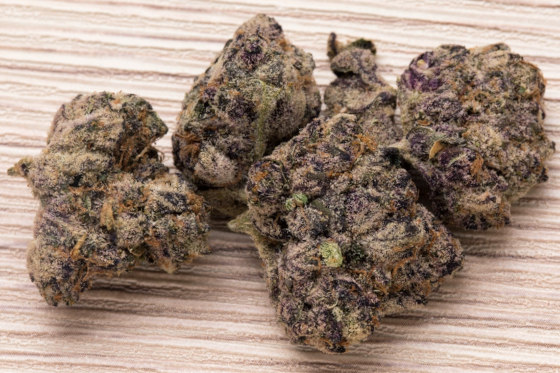
Conclusion: Is Cannabis Growing Still Profitable?
So, is cannabis cultivation still profitable in the legal U.S. market? The answer is “yes—but only for the leanest, most adaptive, and often most diversified operations.” The days of easy money from simply planting some clones and watching the cash roll in are over in the established markets. Profitability has become a tightrope walk, balancing efficient production, savvy business strategy, and often a bit of luck with market timing.
In mature markets like California, Oregon, and Colorado, many growers are barely breaking even or operating at a loss at wholesale prices that have sunk by 60-70% from their peaks. The industry is undergoing a painful shakeout—in effect, a survival test. Those who endure could find a more stable (if less exuberant) market on the other side, with fewer competitors and supply finally aligning with demand.
Indeed, we’re seeing early signs of stabilization: as enough cultivators exit and production pulls back, prices may stop dropping or even recover slightly. For instance, wholesale indexes in late 2023 showed some upticks in a few states as the weakest growers shut down. “Flat is the new up,” as was said of Michigan’s market leveling off. Investors and growers alike have tempered their expectations—cannabis farming is settling into being a commodity agriculture business with thin margins, not a guaranteed gold mine.
However, profits can still be found. Newer and limited-license states demonstrate that when supply is constrained, growers can do very well—at least for a while. We’ve seen cultivators in states like Missouri and New Jersey enjoy high prices and healthy margins; the key is getting in early or operating in a state that deliberately keeps producer numbers low. These instances might be temporary arbitrage opportunities until markets mature. Long-term, if federal legalization opens interstate commerce, it could reshuffle the deck entirely: we might end up with something akin to the beer industry—a few huge producers supplying the mass market (likely from the lowest-cost regions) and a collection of craft producers supplying specialty markets. In that scenario, the most efficient large-scale growers (probably in places with cheap land, sunshine, and favorable laws) could profit by volume, while small boutique farms could profit by distinction and quality, and many mid-size players may struggle in between.
For now, any grower aiming to stay profitable must embrace adaptation. That means adopting cost-saving technologies (e.g. LED lighting, automation), optimizing each gram produced, possibly shifting to greenhouse cultivation if feasible, and exploring vertical integration or partnerships. It also means knowing your market niche—if you’re a craft grower, build that brand and loyal customer base; if you’re a volume grower, secure those contracts for extracts or wholesale and be the low-cost leader. The cannabis plant grows relatively easily—it’s the selling it at a profit part that has become the real challenge.
One optimistic note: consumer demand for cannabis keeps growing nationally (both for THC and for new cannabinoids). As stigma fades and more people choose cannabis over, say, alcohol or pharmaceuticals for relaxation or relief, the overall pie gets bigger. By Whitney Economics’ tally, U.S. cannabis sales jumped 9% from 2023 to 2024 despite headwinds. If and when the U.S. moves towards federal legalization, some burdens like 280E taxes might lift, and interstate trade could allow comparative advantage to create a more sustainable national supply chain. American growers could even export to other countries in the more distant future—a potential huge market if U.S. producers remain quality leaders. So, there are scenarios where profitability improves again after this consolidation phase.
In the end, cannabis cultivation has transitioned from a speculative boom to a tough, competitive agricultural sector. Profit is possible, but it must be earned through skill, efficiency, and strategy. The exuberance of the early legal era has been replaced with the pragmatism of running a farming business under tight margins. As the industry saying goes, “It’s not what you grow, it’s what you sell.” Growers who internalize that—focusing on market needs, not just plant yields—are finding ways to thrive even now. They are innovating with products, forming co-ops, lobbying for better regulations, and meticulously managing costs.
Cannabis growing is still profitable for those who treat it as a dynamic business—excited, adaptable, and resilient—and not just as “growing weed.” The green in the industry now comes not just from the plants, but from the ingenuity and hustle of the people cultivating them. As the market stabilizes and matures, the hope is that a more sustainable, profitable equilibrium will emerge for the remaining cultivators who weather this storm. In the meantime, it’s a Darwinian fight where only the fittest (or most creative) growers survive and prosper in the ever-evolving cannabis landscape.

